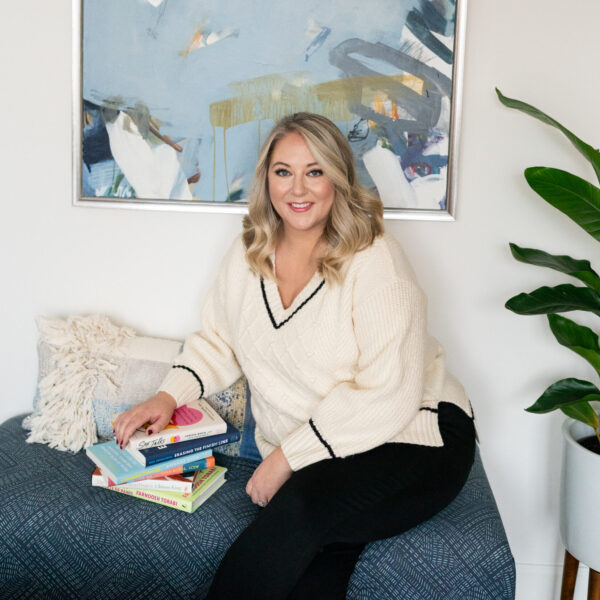
Burning Book Questions and Answers
Answers to the most commonly asked book questions first-time authors have about everything from the proposal to the finished product.
Burning Book Questions and Answers
Are you ready to get some answers to your burning book questions?
Writing a book is not for the faint of heart, but if writing one is on your heart, nothing should stop you from pursuing it.
Every month, I host a live gathering of aspiring authors at different points of their journey.
I take their questions and offer guidance based on what I know, having worked on the publishing side and as a book coach for over two decades.
So, in this blog post, I’ll share the most commonly asked book questions first-time authors have about everything from the proposal to the finished product.
You’ll leave informed, inspired and relieved that other aspiring authors share your questions and that you have the answers you need to move forward.
But first, let’s address some common concerns that frequently pop up disguised as book questions!
Book Questions That Are Really Mental Roadblocks
Have any of these thoughts run through your mind?
How am I going to find enough time to do this
The book publishing process takes so long? Is it really worth it?
How am I going to do all this work on my book?
I’m trying to show my best work, but perfectionism is holding me up. How do I make progress?
Yes? Well, welcome to the world of aspiring authors; you’re not alone.
And … these are thoughts you must embrace and push through if writing a book is one of your goals.
Let me be an objective voice and assure you that your message is important, and while it may seem cliche to say, you’ve got to remember why you’re doing it.
I want you to think about writing for connection, not perfection, which means not trying to validate yourself on the page.
You may not realize it, but when you try to exude perfection and ensure everything is buttoned up, you’re likely trying to prove that you are worthy enough to write this book. And that you know all there is to know about this topic.
If you do that, you’ll be writing that chapter for the rest of your life!
So, what is your goal?
Write for connection. Your book is an opportunity to build community and a relationship and to make your reader feel seen.
That doesn’t come through perfection; that comes from just being honest and genuine.
Now that we’ve covered the underlying internal questions and obstacles every writer faces let’s get into the nitty-gritty of the book questions.
Q: What is the best assortment of sample chapters to send?
When crafting your book proposal and query letter, there can be some confusion about what chapters to send and how long the book proposal should be.
The key to selecting the best sample chapters to submit is about striking a balance.
The first chapter or introduction of your book is crucial because it should give an overall view of your work and be more varied than the overview in your proposal.
Your second sample chapter should then take the reader deeper into your narrative, letting them experience a profound revelation, a pivotal moment, or a truly captivating segment.
However, understanding the submission guidelines can be a tricky dance.
Some agents or publishers may specify that they want the first 10 pages, but it’s important to discern what type of author they’re speaking to with such a request. That kind of requirement is often more relevant to fiction authors than non-fiction writers.
If you get such a request, it might be a good strategy to submit your proposal’s overview in the specified web form or email, effectively whetting their appetite, and then mention at the end that you have a fully-written proposal ready to send along with two sample chapters.
In this scenario, if I were limited to sending 10 pages, I’d choose my overview as the most relevant content.
Every publisher or agent will indeed have their specific guidelines. Some might want the first 10 pages, some might want 20, and others might even ask for up to 50.
Some might also request an overview, marketing strategy, author bio, and 20 pages of your writing. So yes, it can get confusing with all the different requirements!
That said, wherever possible, we hope you can include your whole proposal.
After all, a book proposal is a treasure trove of valuable information that most people might not realize. It’s the culmination of all your hard work, and it helps the receiver understand the full scope of your project.
In the end, being transparent about your submission will ensure that you and the recipient are on the same page – pun intended!
Now onto the next burning book question I get time and again.
Q: What are publishers and agents looking for in the chapters?
I recommend thinking about your chapter content as having two jobs:
- Disarm
The idea of disarming your reader can be simplified to communicating that whatever they’re going through or experiencing is not their fault.
The goal is to help the reader understand that they’re not alone in their struggles; the issues they face often stem from systemic or societal problems.
For example, when we talk about certain topics, it’s important to point out the broader influences at play, the preconceptions, and the societal pressures.
Agents and publishers want to read that you’ve acknowledged that the readers’ feelings of inadequacy or confusion aren’t personal faults but rather the result of societal conditioning.
- Connect with the Culture
The cultural problem pertains to the larger-scale implications of the issue at hand.
What does it mean on a global scale? What are its impacts on our communities, cultures, or societies?
Analyzing and presenting these overarching issues gives your readers a broader context for the problems they’re personally grappling with.
In my Book Proposal Blueprint program, I advise clients to think of their first chapter as an inverted pyramid.
At the wide top of this pyramid, you should address two crucial elements: the cultural problem and the reader’s pain point.
As you move down the pyramid, the next layer focuses on the reader’s pain points. This level is about directly addressing what the reader holding your book might be experiencing. The goal is to empathize with their struggles and let them know you understand their experiences.
Also, outline the purpose of your book— what will your reader gain or experience by the time they finish reading? Remember, while you’re engaging them on a relatable, personal level, you’re also helping them understand the bigger world challenges and their own struggles—the very things that keep them up at night.
This approach will create a balanced first chapter that resonates with your reader and compels them to continue the journey through your book. If you’re working on a book proposal, applying this pyramid model to your overview will similarly capture your potential publisher’s interest, bridging the gap between universal problems and personal experiences.
And now for the next book question … a personal one.
Q: Who should I share what I’ve written with and when?
Taking the leap to share your work with others can be nerve-wracking – it’s like stepping into a brave new world of feedback and perspective.
So how can you do it with intention so you can solicit valuable feedback?
Here’s what I recommend:
- Keep your early readers’ group small and deliberate.
These should be individuals whose opinions you value and who you believe will genuinely enhance your project.
Avoid sharing with people who have a history of bringing you down or those who are too close to the subject matter of your work.
You need to feel secure and confident when opening up for feedback, and the wrong audience can cause you to have doubts and set you back.
- Avoid opening up your work to everyone right away.
Writing a book is exciting and deeply personal work, but there will be plenty of time for the masses to voice their thoughts once your book is published in its entirety. For now, maintaining a tight, trusted circle is key.
- Consider setting specific questions to guide their feedback.
This will prevent your readers from going off tangent and giving unwanted opinions. By providing the same five or six questions to each of them, you can gather valuable data on consistent themes or issues that might need addressing.
This approach not only keeps your feedback focused but also provides a layer of protection to your creative process.
Q: How do I keep the audience excited when I’m way behind schedule?
Being behind schedule is par for the course, so here’s what I recommend you do to keep your audience engaged:
- Have an open dialogue about your project’s progress and share your enthusiasm.
- Explain why you believe the world needs your book, drawing from relevant studies or societal observations.
- Don’t keep your content hidden; agents and publishers appreciate seeing authors actively engaging with their content.
- Use this as a teaching moment and invite your audience to relate to the process. Include them in your journey by discussing their own experiences and how they’re handling their challenges.
As I mentioned earlier, no one wants to see perfection because, quite frankly, very few can relate! so share your process, your setback and your fears because you’ll create deeper connections and enrich your work.
Up next: a book question about platform-building.
Q: Which social media platform should you use to build your audience?
In the realm of conversation and engagement, social media undoubtedly takes the crown. But which platform should you choose?
And what do you do if being visible on social media sends chills down your spine?
It boils down to two main factors: your comfort level and where your readers are.
I always recommend that authors gravitate toward the platform they’re most comfortable with.
You’re more likely to be active and engaging in a space that feels familiar and enjoyable.
Second, consider where your readers hang out. If you’re writing a book on fashion influencer trends, for instance, your audience is more likely on Instagram or TikTok, not Facebook.
YouTube can be a fantastic platform, particularly if you enjoy creating video content. It’s great for repurposing content too. You could film a video and repurpose it on Instagram, feeding various other platforms.
However, if your forte is writing, consider more text-oriented platforms like LinkedIn or Substack. The goal is to pick a platform that aligns with your content style.
And while you’re engaging with your audience, don’t forget to ask about their experiences.
Their feedback can help you develop your writer’s voice and keep your content relevant and relatable.
Ultimately, it’s all about connecting with your audience wherever they (and you) feel most at home.
And, now or the final book question…
Q: Do I need an agent to go out to hybrid publishers?
You do not need an agent to go the hybrid publishing route, and the publishers I recommend because I’ve worked closely with them on different publishing models are Page Two and Amplify.
In terms of financials, going that route saves you 15%, and you’ll keep a higher portion of the royalties and 100% of anything you sell on your own. You’ll keep 30-80% of what you sell through retail.
Burning Book Questions: None Are Too Big or Small
In conclusion, the journey to writing a book and getting it published is multifaceted, filled with many considerations, decisions and book questions.
From choosing which sample chapters to send to publishers, understanding the importance of connecting with your readers on a deep, authentic level, to deciding when to share your work and choosing the right social media platform to engage your audience – each step is crucial.
Remember, each writer’s journey is unique, and what works for one might not work for another.
I hope these answers will help you navigate your book journey based on your style, comfort zone, and audience.
Above all, keep writing. Your words have the power to inspire, to change perspectives, and to make a lasting impact on your readers.
Stay brave and intentional in your process, but also remember to keep your audience at the heart of it all. After all, it’s for them that you’re writing in the first place.
Have a specific book question of your own?
Join the next free Aspiring Authors Assembly, and feel free to ask me. No question is too big, too small or too specific.
Share this post!
The Truth About Imposter Syndrome & Inspiration
So, if you’re ready to kick imposter syndrome to the curb and grab your book-writing journey by the horns, you’re in the right place.
Rethinking Bestseller
Becoming a bestseller is a wonderful accomplishment, but for many who seek to see their books on shelves, it’s not the end-all-be-all, and for a vast majority, it’s a goal that can be more harmful than good.
Write a Book in 2024: Activate Your Plan
Activate your plan to write a book in 2024 by taking small, intentional steps that are proven to create momentum and inspiration.
Need a roadmap to publishing your book?
I’ve got you covered!
Enter your name and e-mail below and I’ll send you my roadmap for developing your book idea. You’ll learn how to attract the right agents and publishers, and be on your way to getting your book out into the world!


